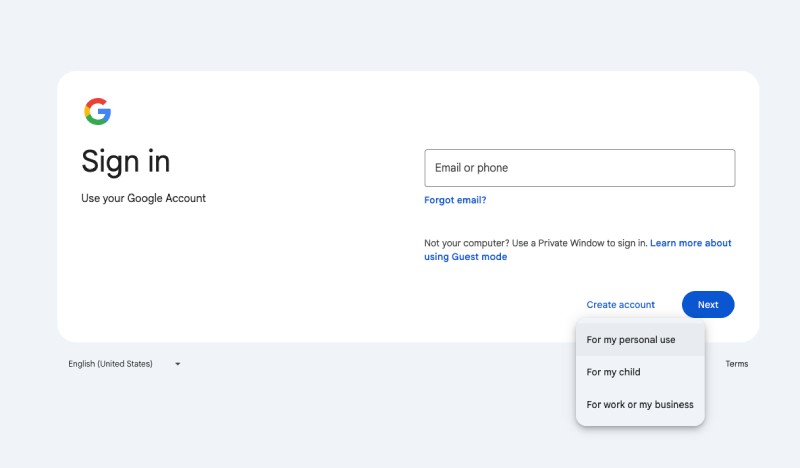When it comes to digital marketing, tracking the right metrics is essential for refining and improving your campaigns—and you can only improve the numbers that you track. This principle proves to be particularly applicable for any inbound marketing efforts, whether they’re organic or paid.
To help guide your focus and improve the efficacy of your campaigns, we have identified three essential categories of key performance indicators or KPIs that are commonly used in our marketing campaigns, each organized to provide a clear framework for prioritization.
Must Have Digital Marketing KPIs
Certain KPIs are absolutely essential for every campaign to monitor, as these can help you better understand how your digital marketing campaigns are performing.
Website Traffic
The total number of visitors to your website is a fundamental metric, serving as a primary indicator of your overall reach and the effectiveness of your marketing efforts.
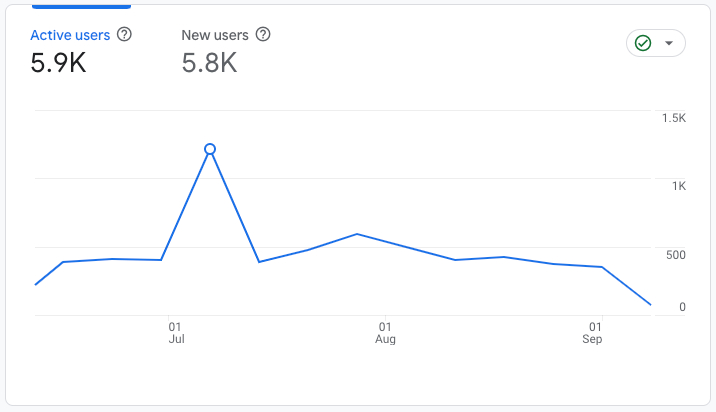
Organic Search Traffic
This KPI measures the amount of people that are reaching your site through organic search results.

Keyword Rankings
Tracking the status of target keywords in search results is essential for assessing SEO performance. Higher rankings for relevant keywords can significantly improve website visibility while promoting organic traffic.

Page Load Time
How long it takes a page to load is an important factor influencing user experience and SEO rankings. Use the PageSpeed Insights tool to see how fast your website currently loads!
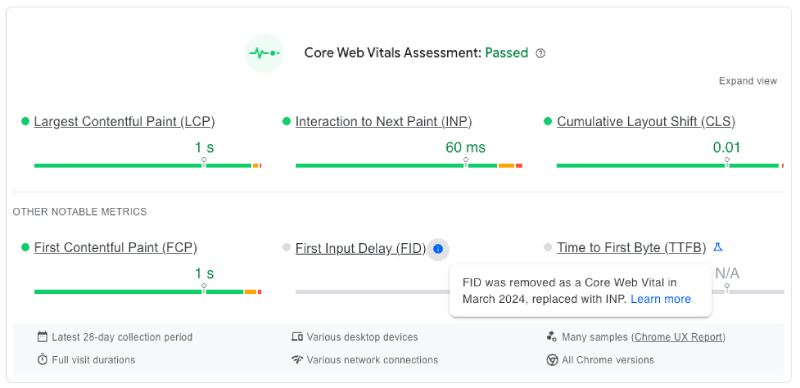
Explanation Of Page Speed Metrics
- Largest Contentful Paint (LCP): LCP measures the time it takes for the largest visible element on a webpage (such as an image or block of text) to load, impacting perceived load speed.
- Interaction to Next Paint (INP): INP assesses the responsiveness of a page by measuring the time between a user interaction (e.g., clicking a button) and the next visual update or “paint.”
- Cumulative Layout Shift (CLS): CLS tracks the visual stability of a webpage by measuring unexpected layout shifts during loading that can disrupt the user experience.
- First Contentful Paint (FCP): FCP measures the time it takes for the first piece of content (text, image, etc.) to be rendered on the screen, providing a key indicator of load performance.
Cost Per Click (CPC)
CPC metric measures the cost per click on a paid ad. Keeping this low while maintaining quality traffic is a key goal for cost-effective ad spending.
Click-Through Rate (CTR)
CTR is the amount of uses that click on your ad or link after seeing it and is a core measure of ad effectiveness.
Return on Ad Spend (ROAS)
This tracks revenue earned per dollar allotted to advertising. A high ROAS indicates that your ads are effectively driving revenue, making this KPI indispensable for measuring financial performance.
Cost Per Acquisition (CPA)
This metric measures the total cost of a customer completing a specific action like registering for your service or buying a product.
Lead Generation
The amount of new leads you generate is a clear indicator of your campaign’s success in attracting potential customers.
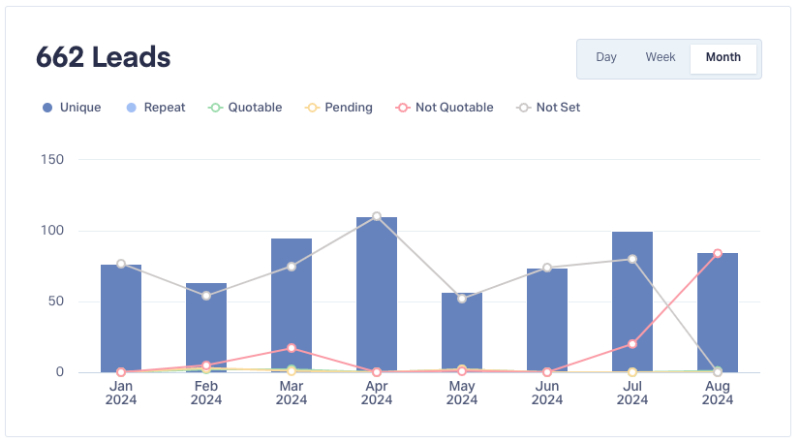
Lead Conversion Rate
This KPI measures the percentage of leads that convert into customers. A high lead conversion rate indicates that your lead nurturing and sales processes are effective, turning potential customers into actual buyers.
Should Have Digital Marketing KPIs
Along with your “must-haves”, there are several KPIs that, while not absolutely necessary, provide valuable insights into the performance of your digital marketing campaigns.
Bounce Rate
Bounce rate reflects people leaving your site after looking at a page. A high rate suggests visitors aren’t locating what they’re searching for, prompting a need for content and user experience improvements.
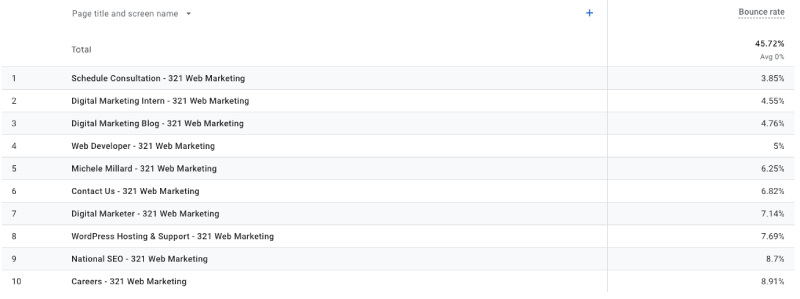
Conversion Rate
This KPI tracks the percentage of people who take a desired action like buying a product or making a sign-up. A higher conversion rate signifies effective marketing strategies and a well-designed user journey.
Average Session Duration
How long a visitor spends on your site, on average, reveals how engaged they are and reflects the quality of your content. Longer session durations indicate that visitors find your content relevant and are likely to engage more deeply with your site.
Pages per Session
Measuring the average number of pages viewed during a session serves as an indicator of site navigation and user interest. A higher number implies that users are thoroughly exploring your site.

Social Media Engagement
Social media engagement tracks user exchanges on social media platforms, tracking how well your efforts are resonating.
Social Media Reach
This metric tracks the amount viewers a piece of content has had. Social media reach is important for understanding the breadth of your content’s impact and its potential to attract new followers.
Email Open Rate
The amount of people that open your email is an important metric for email marketing effectiveness.
Higher rates indicate that your subject lines and sender reputation are compelling to your audience.
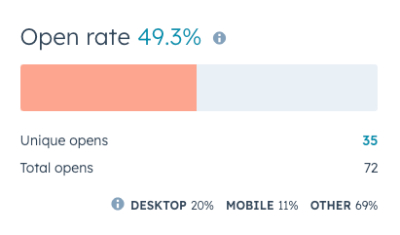
Email Click-Through Rate
This KPI tracks who clicks on a link in an email, which is essential for assessing the engagement level of your email content and its ability to drive traffic to your site.
Email Conversion Rate
Email conversion rate tracks the amount of people that take a desired action with your website or platform after opening your email.
Could Have Digital Marketing KPIs
While there are essential and recommended KPIs for every digital marketing campaign, there are additional metrics that can also provide valuable insights depending on the specific goals of your campaign.
Net Promoter Score (NPS)
NPS gauges customer satisfaction and loyalty. It asks people to figure out their odds of recommending your product or service to others, which provides deep insight into customer sentiment and can highlight areas for improvement in customer experience.
Referral Traffic
This metric tracks the visitors coming from other websites, demonstrating the efficacy of your external links and partnerships. High referral traffic can also improve your site’s credibility and SEO rankings.

Influencer Engagement
Influencer engagement measures the number of interactions with content created by influencers. High engagement indicates that the influencer’s audience finds the content relevant and engaging.
Content Shares
The amount of times people share your content on social media is an important measure of its overall virality. High content shares indicate that your audience thinks your content adds value and should be shared.
Video Views
Tracking the number of views on your video content is a key metric for assessing video marketing success. High video views suggest that your videos are attracting and retaining audience attention.
Video Engagement
This KPI measures interactions (likes, comments, shares) on your video content. High video engagement indicates that your video content resonates well with viewers and encourages interaction.
Mobile Traffic
The amount of people accessing your website using mobile devices is an important indicator of your site’s mobile-friendliness.

Mobile Conversion Rate
This metric tracks the amount of conversions made from mobile devices. A high rate suggests that your mobile marketing efforts are effective and that your site is optimized for mobile users, leading to successful conversions.
Customer Retention Rate
Customer retention rate measures the amount of ongoing customers you have. High retention rates suggest that consumers are satisfied with your product or service and will probably return.
Customer Churn Rate
Your customer churn rate tracks the percentage of consumers that you’ve lost over a set period of time.
Start Maximizing Your Digital Marketing Campaign With 321
Tracking the right KPIs is key to optimizing your digital marketing campaign and hitting your revenue and business goals. At 321 Web Marketing, we know KPIs drive successful campaign and marketing strategy. What other KPIs do you use?.
Our range of digital marketing services is designed to help you maximize your online presence and achieve your marketing goals. Schedule a consultation today to begin overhauling your existing digital marketing strategy.







